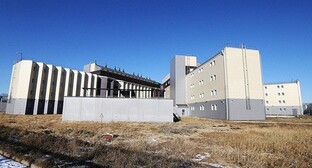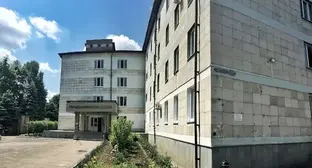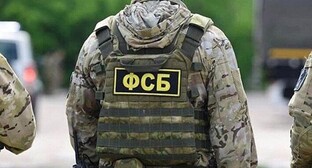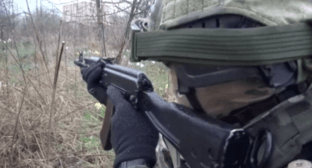02 June 2003, 13:26
Turkmen
They call themselves turkmen (in the Russian literature of the 18th-begining of the 19th century - trukhmyans, trukhmen). They form the main population of Turkmenia. They also live in Uzbekistan, Tajikistan, in the north Caucasus, in the Astrakhan district and in a number of Russian cities; since the beginning of the 19th century Turkmen that moved from Mangishlak live compactly in the east and north-east of the Stavropol territory. The total population of Turkmen is over 4,6 million, including over 2,5 million on the territory of Turkmenia (data of the census of 1989), more than 700 thousand in Iran, about 350 thousand in Afghanistan, about 200 thousand in Iraq, 120 thousand in Turkey; there are Turkmen diasporas in Syria and Jordan.
Turkmen belong to the Caspian version of the Indo-Mediterranean race of the big European race. They speak Turkmen language of the Oguz (south-western) subgroup of the Turk group of the Altai family. There are 3 dialect groups; Tekin, Sarik, Goklen, Yomud, Karadashli-Alilin and Ersarin dialects; Anaus, Khasar, Nokhur, Chovdur; dialects of Charjou district. Their literacy was first based on Arab alphabet, then on Russian alphabet. The literary language is bases on Tekin dialect. Believers are Moslems-sunnites.
The earliest part of the ethnogeny of Turkmen were the ancient Iran-language nomadic and semi-nomadic tribes (Dakhs, Massagets, later Eftalits and Sarmato-Alans) that lived on the territory of modern Turkmenia, as well as the settled Iran-speaking farmer population of the western Khorezm, middle Amu-Daria district and the north of Khorasan. Since the 4-6th century this population, especially its nomadic part, was subject to Turkmenization. A big number of Oguzs penetrated to the territory of Turkmenia in the 9-11th century and played an important role in the ethnogeny of Turkmen, having determined many traits of their culture, language and the physical traits. The main part of Oguzs that came in the 11th century from the north-east with Seljuks, settled here and gradually got mixed with the local population. There took place the forming of the Turkmen language. Later Turkmen were joined by the Turk tribes of non-Oguz origin - Kipchaks, Jelairs etc., in the beginning of the 13th century - part of the Tatar-Mongols. The process of forming of the Turkmen nation has finished in the 14-15th century, when after the Mongol invasion there formed the new tribal unions that formed a nucleus of the Turkmen nation: Chovdur (Chovdurs, Ig-dirs, Abdals, Arabachis), ?outer? (Teke, Yomuts, Sariks, Ersari) and ?inner? (Salirs themselves) of Salirs as well as Goklens. Besides them and the smaller Turkmen tribes - Yazirs (Karadashli), Yemreli, Bayats etc., in the oases of Turkmenia there remained a numerous Iran-speaking population, while in the steppes there lived the nomads from the other Turk and Iran tribes. During the following centuries this population got assimilated with Turkmen. In the 16-18th centuries there was amass movement of many Turkmen from the western Turkmenia to the southern districts and the Khorezm oasis (mainly because the Sarikamish lake where they lived was drying). The movement was followed by conflicts between the tribes that weakened the Turkmenian tribes. The political and economical dissociation, constant wars and the intrusions of the feudal lords of the neighbor countries destroyed the production forces and impeded the economic, cultural and social development, caused the conservation of archaic social institutions. Till about the 1880-ies Turkmen had patriarchal slavery; there remained the archaic division into eg - ?pure blood?, gul - ?slaves?, girnak - ?women-slaves? and yarim - children from mixed marriages of free people with slaves. Besides those main social categories there also existed gelmishek (gonshi) - the new-comers from the different tribes and tat - the successors of the defeated Iran nations that haven?t assimilated completely.
Until 1930-ies Turkmen still had tribal division with a multi-step clan division within each of them. The biggest were Tekins (teke), Yomuts, Ersari, Salir, Sarik, Goklen and Chovdur. The tribe and clan connections played a very important role and were used by the tribe leaders to exploit their congeners.
In 1880-ies Turkmenistan joined Russia and on its territory there started the process of raising the economic and political life, though turkmen were divided in three parts (excluding the Turkmen of Iran and Afghanistan); in Zakaspiysky district (main part), later included in Turkestan territory, in Khiva khanate and Bukhara emirate.
Before the October revolution of 1917 the social system was patriarchal-feudal with some elements of capitalism that were more significant in the southern districts. In October 1924 the Turkmen Soviet Socialist Republic was formed on the grounds of Turkmen (since 1991 - the independent state of Turkmenistan).
Traditional occupation of Turkmen was irrigated agriculture combined with nomadic and distant-pasture cattle-breeding. Turkmen had a semi-nomadic way of life. The inhabitants of the same village were divided into cattle-breeders (charva) and settled (chomur) farmers. Western Turkmen were mainly nomadic cattle-breeders (sheep, camels, horses), while some part of Turkmen living in oases had agriculture prevailing ( wheat, joeghara, melons an gourds, cotton) and cattle-breeding. Home crafts were mainly female. By the middle of the 19th century making carpets, weaving silk and making large felt mats became of an industrial importance.
Traditional dwelling of Turkmen was a tent (gara oi). In the oases together with the tents there were the permanent dwellings, mainly 1-3 roomed clay or raw brick houses (tam) with flat roofs and several small windows. The Turkmen living by the Caspian sea had wooden houses on piles. Nowadays a house in the village is made of raw or fired bricks, has 3-4 rooms, 2- or 4-slope roof covered with slate or iron sheets, and big windows. There remains a covered veranda (aivan) that is used to rest and sleep in summer time. The household rooms are in the backyard. Nowadays the tent is used in many districts as a summer dwelling in the yard or the house for shepherds at distant and seasonal pastures.
Modern clothes combine traditional elements with the city European elements. Aged Turkmen continue to wear male costume that consists of a shirt and trousers; a robe is put over it. The head gear is a high sheepskin hat with soft curls (telpek) with a scull-cap (takha) under it. The shepherds wear national boots (charik, chokai) made of bull skin. On holidays young men wear red silk gowns (girmizi don) and telpek. Women in the villages (sometimes in the cities) wear long tunic-shaped dresses (koinek) usually of red color, short sleeveless jackets (yensiz), long trousers narrow at the bottom (balak); they cover the head with a big silk or woolen kerchief. In many districts girls? head gear is an embroidered scull-cap with silver decorations (takha, borik). The national female costume usually has a lot of silver decorations.
Traditional food - meat soup (chorba) with different spices, fried meat (govurma), pilav (palov), different sour milk products (gatik, suzme, agaran) made of cow , goat, sheep and camel milk, rice porridge. They make round flat flour cakes (chorek, gatlama, chelpek), make pelmeni, noodles etc. They drink a lot of green tea (gok chai).




